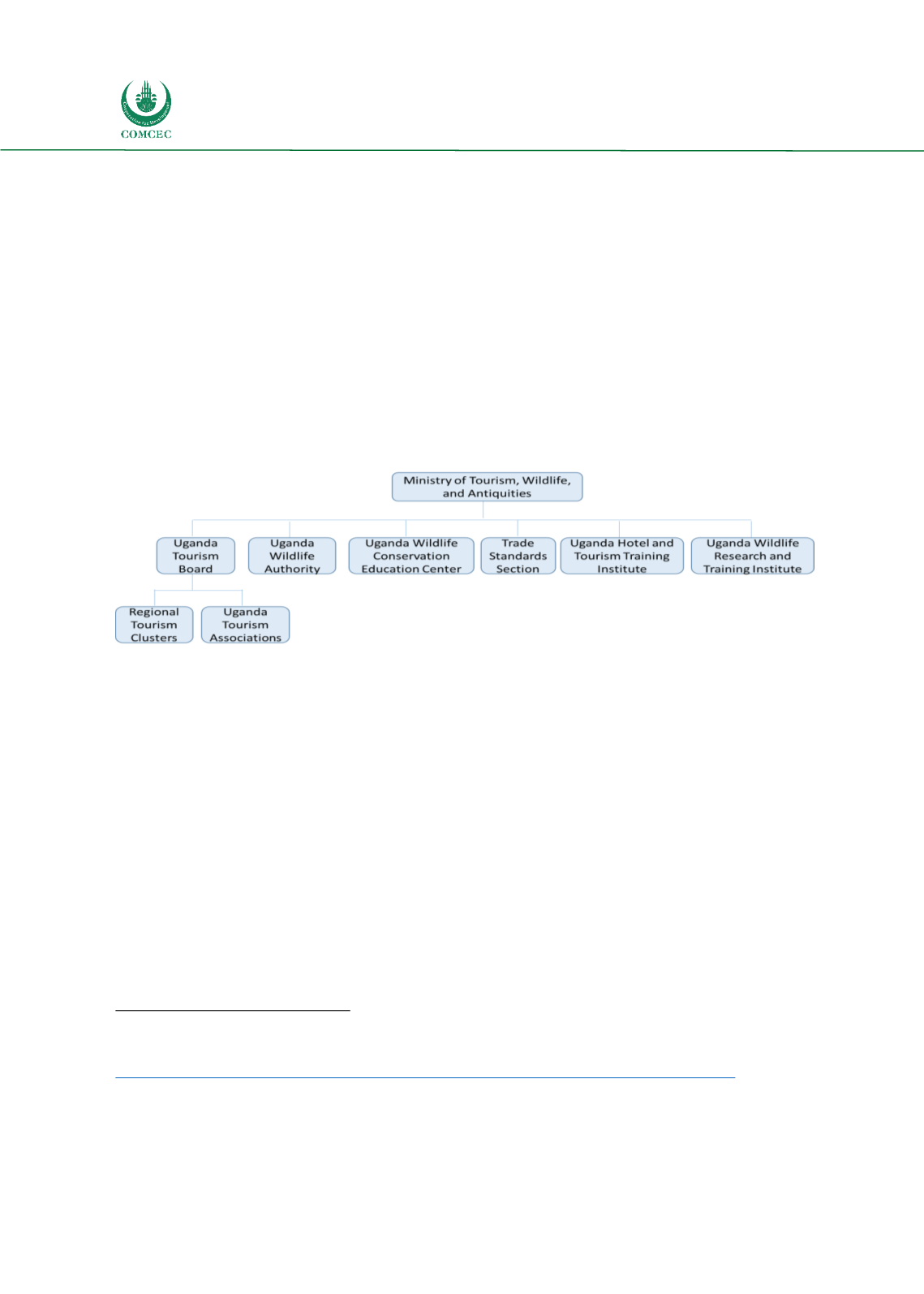

Sustainable Destination Management
Strategies in the OIC Member Countries
66
and human resource capacity building, product development, improved marketing and
promotion, improved research and planning, and overall infrastructure development.
193
The Uganda Wildlife Authority (UWA) is in charge of most of Uganda’s natural areas that were
set aside by Government as national parks and wildlife reserves for protection of wildlife
heritage and wilderness ecosystems and to contribute directly to the country’s economic
development through tourism and provision of ecosystem services. As Uganda’s tourism is
nature-based with the majority of leisure tourists visiting the protected conservation areas,
UWA is pivotal in tourism governance in Uganda. With 10 national parks, 12 wildlife reserves, 5
community wildlife management areas, and 13 wildlife sanctuaries under its authority, UWA’s
role in managing tourism in Uganda’s key destinations as well as attracting investors to the
sector has been significant.
194
Figure 14: Uganda - Tourism Bodies
Due to the fact that Uganda’s tourism product is based around its national parks it has meant
that much of its tourismmanagement is in fact led by the UgandaWildlife Authority (UWA). UWA
has also been incentivized to focus on tourism development because it generates the necessary
funding for their conservation work and operational costs. Strategic Planning in UWA took root
in 2001 when the first ever strategic plan in the organization was first developed.
The Uganda Wildlife Policy (1999), the National Tourism Policy (2003-2010), the National
Development Plan (2010- 2015), and nowadays the TourismSector Development Plan 2015/16-
2019/20 have consecutively guided the tourism sector.
195
The Tourism Policy of Uganda 2003
kick started tourism’s role once again as a vehicle for poverty eradication (after the decline
during its instability period) although somewhat limited by resource and market constraints to
date.
196
The policy further emphasized the need to facilitate the flowof tourists within the region
and promotion of East Africa as a single tourist destination. Later, the Tourism Act 2008
reconstituted UTB and gave it a wider scope of functions aimed at promoting Uganda as a
preferred tourism destination. UTB’s mission became to develop, promote and coordinate a
193
Uganda Tourism Board. (2017). Performance Report: Financial year 2016-2017. Retrieved from
http://www.corporate.visituganda.com/wp-content/uploads/2017/12/Performance-Report-2016-2017.pdf.194
Uganda Wildlife Authority. (n.d.).
Strategic plan 2013-2018
. Retrieved from
http://www.ugandawildlife.org/images/pdfs/general_management_plans/UWA_Strategic_plan_2013-2018.pdf .195
International Trade Centre. (2011).
Uganda inclusive tourism
. Retrieved from
http://www.corporate.visituganda.com/wp-content/uploads/2014/12/ITC_Opportunity_study_Uganda.pdf.196
Uganda Wildlife Authority. (n.d.).
BINP General management plan 2014 – 2024
. Retrieved from
http://www.ugandawildlife.org/images/pdfs/general_management_plans/Bwindi_Impenetrable_National_Park_GMP_2014-2023.pdf.
















